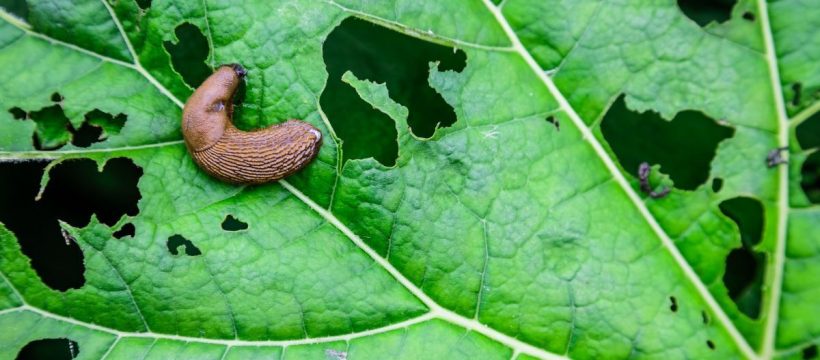Gardening expert details natural ways to deal with slugs
Between March and June, slugs and snails are much more likely to be prominent in the garden, “wreaking havoc” on plants by feasting on them, according to sustainable pest prevention expert Green Protect. They explained: “During the day, they will hide in dark, cool and humid places to shelter and rear their heads at night to feed, preferring new and tender roots. Adult snails can also lay up to 100 eggs per month, meaning the danger of rapid infestation is extremely high.”
1. Copper tape
It is important not to kill slugs and snails, looking for humane ways to deal with the problem. The experts recommended the addition of copper tape to the top of plant pots.
They said this is an “easy” way to “deter” the creatures and it will also last a long time due to the robustness of the material.
The pest pros explained: “Simply put, copper tape deters the pests by giving them a small electrostatic shock not causing any serious harm or long-term damage, but is enough to stop them from attacking your plants.
“It’s also a very subtle solution in terms of aesthetics, with the tape being a similar colour to most plant pots meaning it will largely be unnoticeable.”

2. Barrier pellets
Green Protect also sells eco-friendly, chemical free barrier pellets which is a quick and easy solution for keeping slugs and snails away from plants.
They are also simple to use, as all you have to do is place them around the stem of the plant, forming a physical barrier, making it “very difficult” for the creatures to get through.
The experts noted: “While Green Protects pellets are a completely humane repellent, last year saw the ban of widely used metaldehyde pellets, which were deemed a huge danger to birds and other mammals following years of campaigning from various groups.”
3. Avoiding susceptible plants
Slugs and snails love young plants, and while it may be irritating, gardeners should avoid growing susceptible plants at all costs, such as hosts.
Don’t miss…
‘Easiest’ and ‘most efficient’ method to clean washing machines [COMMENT]
Pruning roses is ‘essential’ for plants to ‘thrive’ – job for now [EXPLAINER]
House prices drop but property market could see ‘return to normality’ [INSIGHT]
They are widely regarded as one of the plants gardeners have the biggest problem with infestations as they are appealing to slugs and snails.
The pest experts added: “Although the plant is aesthetically pleasing, it does not stay that way for long once the slimy pests have made their way through the big leaves.
“If you find your hostas plants are being eaten year after year, it might simply be time to move on to less susceptible plants like aquilegia or foxgloves.”
4. Placing alternative food sources near plants
Scattering alternative food sources around plants can also help to distract them from feasting on them. Gardeners could opt for items such as old and used orange peels or any other citrus fruits.

Cucumber slices will also work well and will help to keep them away for long enough that Britons will be able to deal with infestations before plants get eaten.
5. Creating an environment for natural enemies
Making a garden appealing for animals such as hedgehogs, toads, frogs and ground beetles is a “surefire” way to deter any slug or snail infestations as they are all natural enemies of the slimy pests.
Features like installing a pond, wild niches and having dry stone walls will all help to attract wildlife into an outdoor space.
Sophie Thorogood, from the technical team at Green Protect added: “Slugs can wreak havoc in any garden, especially in those growing hostas plants, bedding plants and vegetables.

“With the recent ban on the sale of slug pellets, keen gardeners are now opting for friendlier methods to deter these slimy critters.
“If you do want to use pellets there are some safe options that are entirely chemical-free and act as a deterrent so won’t cause any harm.
“Alternatively, a garden with biodiversity is a healthy one, so attracting other garden-friendly creatures can also act as a defence from slugs.
“Hedgehogs, toads, frogs and ground beetles are natural enemies of the slug, so creating inviting environments for these creatures to thrive will certainly keep slugs at bay.”
Source: Read Full Article
